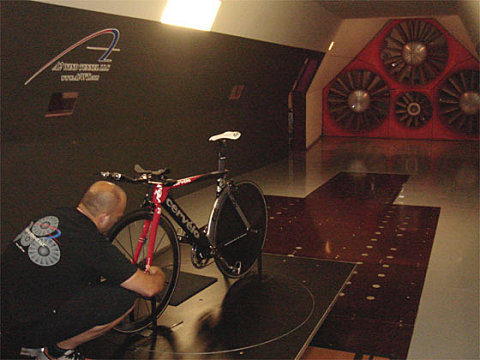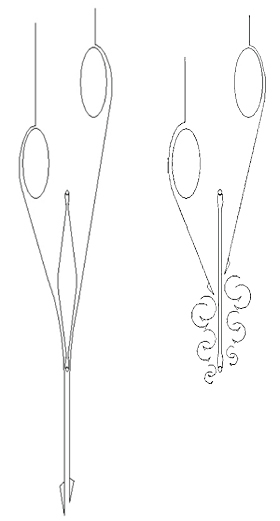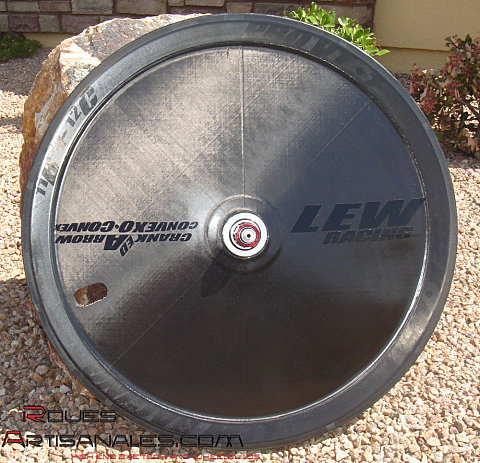|
Convexo Convex. This barbaric name self explains the physical phenomenon Paul Lew, forerunner in bicycle wheels world, relied on for his newest invention. This time-trial disc wheel differs from the others by its shape, which converges on the rear, and features the swirl lip generator reducing the crosswind sensivity. The tests performed in a windtunnel, proved this double convex disc wheel to optimize the aerodynamic of the rider plus bike system: it reduces the drag, so the power needed to ride at a given speed.
Convexo Convex
In theory This wheel pushes the limit of the disc design to a new standard. Where the flat sided disc wheels create a lot of turbulences, a lens shaped disc wheel, by its curved shape on the non « For a minimal drag, the perturbated air flow must converge behind the rider« , Paul Lew told us. This is here this wheel differs from the others, the Convexo Convex is curved on both sides. This special shape helps the air flow, perturbated by the presence of the rider and its bike, to On the right, the flat sided ovoïd rim disc wheel, such as a Zipp Sub9, has the airflow perturbated behind it because of the flat flanges. On the left, the airflow of the Convexo Convex wheel converges and leaves the system as a clear flow, synonym of low drag, so better aerodynamic properties.
In practise The tests performed at Mooresville, North Carolina, USA, recorded thousands datas. The wheels claimed to be the fastest of the market were tested on the bench. The results are summarized in the table below:
Regarding the wheels only, Zipp is indeed the fastest: 12% less drag for the front wheel, and 53% less drag for the rear wheel! The difference is significant and corroborates the datas
A few points are important here: with a yaw angle of 10°, the Zipp404/Zipp Sub9 configuration is as fast as the Lew Pro VT-1/Convexo Convex, taking into account the measure errors. At yaw 20°, the configurations « full » Zipp or « full » Lew are as fast, when taking into account the errors. Weirdly the fastest configuration at 10° is the slowest at 20°.
Only Zipp wheels, among the current fastest wheels have face the Lew in this test. What’s on the scale? Of course, as every products coming from the Lew factories, the components are extremely light. The carbon and boron wheel, lens shape, is 780g. As comparizon, the Lightweight Disc, flat
|
Recherche :
Categories
- Bidouilles :) (36)
- Divers (84)
- Equipement pro (4)
- Etudes (35)
- Le site (56)
- Montages classiques (21)
- Montages high-tech (35)
- Non classé (4)
- Nouveautés (518)
- Salons (151)
- Tests (55)
- Vélos (35)
- Visites constructeurs (6)



